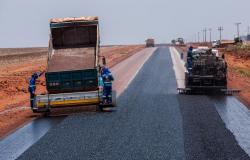Rio Grande do Sul, which has been affected by a sequence of extreme weather events, was the state with the highest number of emergency and public calamity decrees related to rain last year in Brazil.
A survey of the Public Agency based on data obtained through the Access to Information Law (LAI), it was found that, over the past year, the federal government recognized, across the country, decrees of this type 1,073 times; 433 of them were in municipalities in Rio Grande do Sul, around 40% of the total. During the period, at least 71 people died as a result of the storms in the state.
The numbers recorded in 2023 were the highest in the last ten years – a historical series analyzed by the report – both for Brazil and Rio Grande do Sul. In the country, the previous record was in 2022, when there were 883 recognitions related to rain ( 146 of them in Santa Catarina, the largest share – 16.5% of the total). The 2023 number, therefore, was 21.5% higher than the previous year. The average between 2014 and 2022 was 452 recognitions of this type per year.
In Rio Grande do Sul, the previous record was in 2017, when the state had 243 recognitions related to rain. The 2023 number was 78% higher than the 2017 record. The average between 2014 and 2022 was 101 such cases. Compared to the 49 decrees registered in 2022, the growth was 783%.
These decrees are requested by municipalities and need to be recognized by the federal government to release emergency resources. Declarations of emergency situations and public calamities are registered in the Integrated Disaster Information System (S2ID), a platform linked to Civil Defense, which analyzes and recognizes requests for recognition, and to the Ministry of Integration and Regional Development (MIDR), which provides financial aid to affected municipalities.
In addition to access to exceptional monetary resources to respond to disasters, the decrees also allow exemption from bidding for emergency contracts. The number of recognitions of emergency situations or public calamities is lower than the number of disasters registered in S2ID, but it allows us to quantify those that had the most relevant impact on the municipalities.
They also help to understand the seasonality of extreme events and changes in the pattern of these events, explains Liuca Yonaha, acting president of the Talanoa Institute. According to her, this data signals “new trends that need to be anticipated for prevention and also a quick response”.
Since 2019, Política por Inteiro, a Talanoa initiative that monitors the federal government’s actions on topics related to climate and socio-environmental issues, has monitored the recognition of emergency situation decrees through the Disaster Monitor, updated weekly.
Yonaha states that there is a tendency for total recognition to grow in recent years, but what draws the most attention are changes in the pattern. “Emergency situations caused by storms, for example, which were previously more concentrated in the first quarter, are happening a lot in the fourth quarter and also in the second. This means that prevention and mobilization efforts need to adjust. Depending on the region, task force concepts that target the summer rainy period lose meaning and now have to be permanent,” he says.
For her, Brazil’s approach is based “a lot on reaction, little on preparation, less on prevention” to extreme events. With an adaptation agenda, she says, this focus would change, moving towards policies that actually make municipalities more resilient to climate change.
El Niño finds a warming and unprepared planet
The extratropical storms and cyclones that hit Rio Grande do Sul last year, causing historic floods, deaths and thousands of displaced or homeless people, are related to El Niño. But not only. The occurrence of the natural phenomenon, which causes an abnormal heating of the waters of the Pacific, which alters the winds and increases the possibility of heavy rain in southern Brazil, is not enough to explain the disasters, explains climatologist Francisco Aquino, head of the Department of Geography at the Federal University of Rio Grande do Sul (UFRGS).
“The stage where El Niño happened is a planet where the climate and environment have changed. I think the most appropriate word is climate emergency. The two unprecedented floods in 2023 in Rio Grande do Sul occurred due to the combination of climate change and El Niño, in addition to the topography of the Vale do Taquari region. [onde ocorreu o principal desastre]”, points out the expert. He also highlights the devastation of Brazilian biomes as a worsening factor for the extreme weather events that hit the south of the country.
In 2023, the planet that El Niño found was the hottest on record, according to Copernicus, the European space program’s climate change monitoring service: 1.48 ºC above the average of the pre-industrial period (from 1850 to 1900), when humanity began to intensively burn fossil fuels, the main causes of global warming. The number is very close to the 1.5 ºC limit that experts establish as a safe threshold and defined as a target by the Paris Agreement.
And the two conditions – climate emergency and El Niño – found a state and municipalities unprepared to deal with the rains. Last year, a report by Pública revealed that the government of Rio Grande do Sul shelved plans to deal with climate change. The main one, the Disaster Prevention Plan, was finalized in 2017, but never got off the ground. Another report showed that Porto Alegre, also hit by heavy rain last year, is one of 17 Brazilian capitals that do not have a plan to combat climate change.
For Aquino, the authorities are “far below reality” and need to act on “another time scale”. “The alerts [de eventos extremos] are being brought forward up to a week before they occur. Decision makers can no longer hide,” she points out.
In the researcher’s view, it is essential that Rio Grande do Sul and the country “create more robustness in civil defense”. “Society is not culturally prepared to receive warnings of extreme events. If we talk about civil defense structure, 60% of municipalities in Brazil have one person, at most, in charge of this area and, in most cases, he is not an expert on the subject”, points out the UFRGS professor.
6 in 10 municipalities in Rio Grande do Sul had a rain emergency in 2023
Although most of the deaths were concentrated in the Vale do Taquari region, where the passage of an extratropical cyclone caused the biggest flood in 64 years, intense rains and related disasters hit Rio Grande do Sul in a widespread manner in 2023.
In total, 305 municipalities in Rio Grande do Sul declared an emergency or public calamity related to rain at least once, which represents 61.3% of the total of 497 cities in the state. In the rest of the country, 883 municipalities (15.8% of the total) had rain-related decrees recognized by the federal government.
In Rio Grande do Sul, the municipalities of Taquara, Imigrante, Harmonia and Erechim were those that had the most decrees, with four occurrences each. Another 14 municipalities went into emergency three times in 2023 due to rain. As Pública reported last year, 41% of Rio Grande do Sul’s municipalities have low or very low adaptive capacity to weather events, according to Adapta Brasil, a platform run by the Ministry of Science and Technology.
Most of the occurrences in Rio Grande do Sul in 2023 were registered in the month of November, when 148 decrees of emergency or public calamities were issued. In October, there were 90 occurrences, five more than in September, when an extratropical cyclone hit the state and generated the biggest natural disaster in Rio Grande do Sul in 40 years.
Last week, more than 20 municipalities in Rio Grande do Sul were once again hit by heavy rain and gusts of wind. After the storms, the population had to face flooding, roads were closed and more than 1 million people were left without electricity, in addition to a few hundred being left homeless or homeless.
It is not just rain that leads municipalities to an emergency situation. In the last ten years, Brazil had a total of 13,669 emergency situation recognitions spread across all units of the Federation. In addition to rain, drought, fires, dam failures, infectious diseases and coastal erosion are among the events that led cities to declare an emergency. The record for total records for the period was also in 2023, with 2,373 occurrences, around 12% more than the previous record, in 2014 (2,021 records).
Of the more than 13 thousand recognitions, 5,143 were related to rain, 37.6% of the total. In 2023, the percentage of events linked to rain was above the historical average, with 45.2% of the total. In the same period, there were 8,047 occurrences related to drought or drought, 58.8% of the total recognitions in the last decade. In 2023, there were 1,280 recognitions of this type, almost 54% of the total.
Again, when we consider all the recognitions, Rio Grande do Sul leads, with 2,694 occurrences, around 19.7% of the national total in the last decade. In 2023, the state had 771 registrations in total, 32.5% of those registered in the country. Emergency situations were recognized in more than 84% of municipalities in Rio Grande do Sul last year.
In addition to being punished by events related to rain, the state also has a history of emergency situations linked to drought or drought. In ten years, there were 1,300 recognitions of this type, 16.1% of the total in Brazil, behind only Bahia, which had 1,577 in the same period. In 2023, Rio Grande do Sul led the ranking of events related to lack of rain: there were 337 recognitions, more than a quarter of the total in Brazil. Most occurred in January (177) and February (122).
The recurrence of municipalities that faced the two climate extremes in Rio Grande do Sul in 2023 is noteworthy: there were 223, almost 45% of the state. In the ten-year historical series analyzed by Pública, 426 municipalities in Rio Grande do Sul registered at least one emergency decree due to rain and another due to lack of rain, more than 85% of the state.
According to climatologist Francisco Aquino, from UFRGS, the drought faced by the state at the beginning of last year and in previous years is also especially related to the climate emergency. According to him, the effects of the changes that human beings have caused on Earth have combined with the occurrence of La Niña, a natural phenomenon opposite to El Niño, which causes the waters of the Pacific to cool and reduces the amount of rain in the region.
“The three years of La Niña [2020-2023] they were merciless here in the Southern Cone, in Argentina, Paraguay, Uruguay and Rio Grande do Sul, with extreme water scarcity”, points out the researcher, who warns of the possibility of this scenario repeating itself from the middle of 2024, with the return of the phenomenon .
For Aquino, the tendency is for the occurrence of extreme weather events, both intense drought and unprecedented rain, to continue to worsen. “What the technical and scientific literature in recent decades points out is that, if we continue to increase the planet’s temperature, changing land occupation and use, we force the atmosphere, which results in a greater number of storms. But this rain is not distributed homogeneously. There are drought patterns in some locations and floods and extreme rainfall in others,” he explains.





